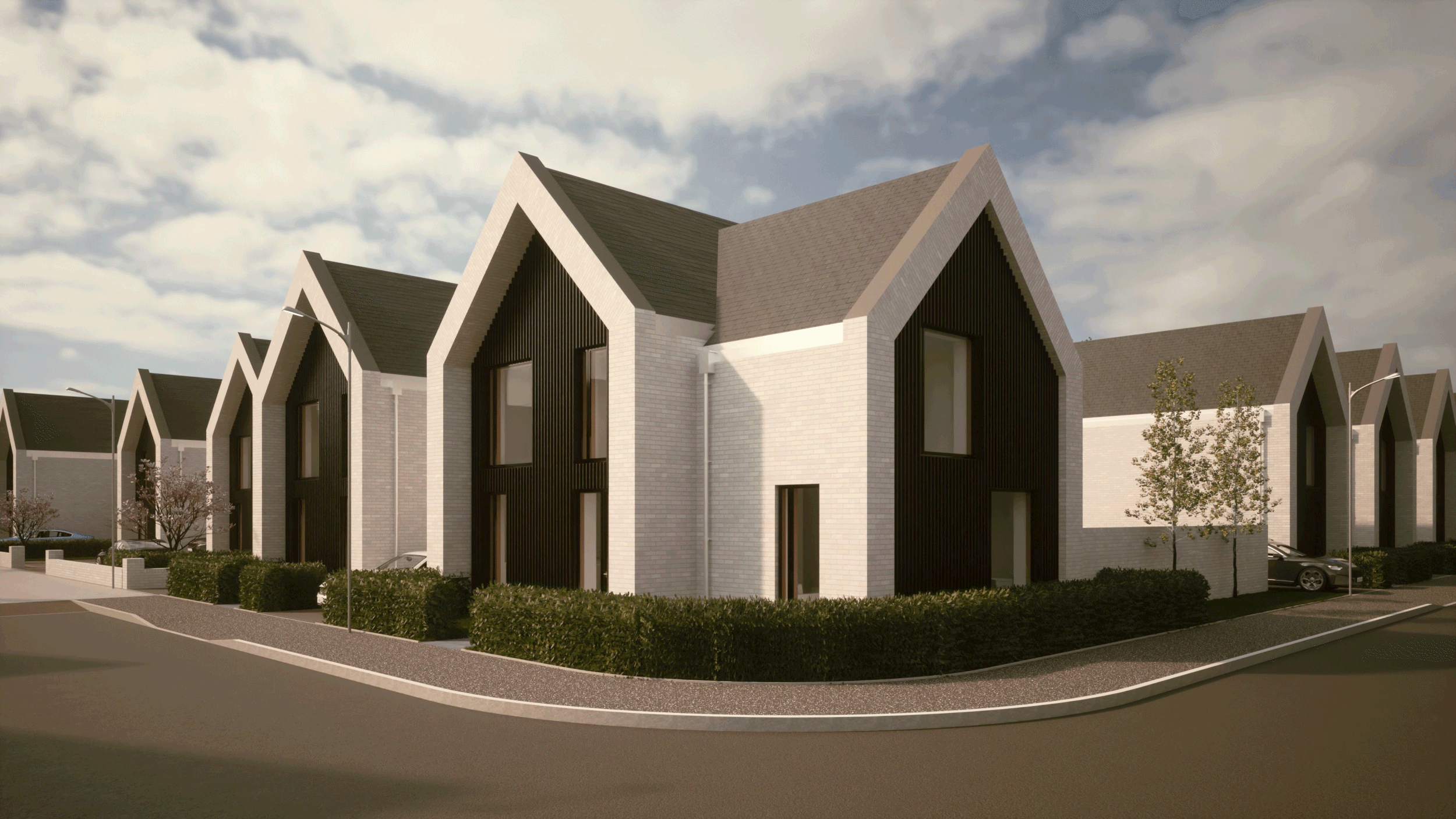Introducing the Skeleton House - a new concept in home design
I’ve worked in the housebuilding industry for nearly twenty years now, first as a young architect at a practice in the south-east of England, then as a slightly older architect working for a national house builder. Now that I’m a middle-aged architect running a practice, I still have the same opinion as I did back then – building homes is hard.
It's on the back of this hard-earned knowledge and experience that I developed a new concept in architectural design: Skeleton House. This system, when applied correctly can provide a step change in the market, driving site optimisation in a way that current standardised products simply can’t.
Anyway, enough grandstanding. Let’s get into the nitty-gritty and show you how it works.
Challenges Faced by Small Housebuilders
Sure, we build a lot of houses in this country, but most of them are built by volume builders, who have loads of advantages – I know, because I was on the inside, learning how optimised their business model is. If you’re building a thousand homes or more per year, you can make things easier – you can buy bigger pieces of land with more opportunity for profit over time; you can hire your own in-house team to work nimbly and control every aspect of the build process; you can negotiate from a position of power with suppliers and planning authorities. The table is tilted in your favour.
But if you’re a small housebuilder, even a large regional house builder, housing association or build-to-rent developer, things are way harder. Land is super-competitive, and bid costs are high. You can’t justify an in-house team to maintain your product (against ever-changing and more complex standards and regulations), and you’re not able to negotiate the best discounts with your suppliers. Plus, we all know that scrutiny of smaller developments is often higher than for large schemes at the planning stage…
This is a truth made clear by the figures – in 1988 39% of homes in England were built by SME housebuilders, in 2020 it was just 10% (Future of small and medium-sized housebuilders, House of Commons Library, May 2023). This is why small urban brownfield sites sit empty while the volume builders work on greenfield sites on the edge of town.
The Problem with House-Type Portfolios
Since I left the housebuilding industry and set up Hope Architects, we’ve been working with a variety of developers, and generally, we’ve found that those with existing house-type portfolios have a problem – the libraries are inconsistent, inefficient, and while the range is often large, there’s usually not quite the exact house you need. All this means that when we’re designing a scheme with your house types, we’re not optimising the land as best we can. If the houses don’t plot neatly together, it’s a waste of land. If the houses are too wide or too deep for the constraints of the site, it’s a waste of land. If you don’t have the right size of houses, you can’t tailor the mix to the market precisely, and you’re not optimising the site. If the houses aren’t adaptable, we can’t efficiently build on sloping ground. But, if we use a non-standard type, it’s not properly costed and doesn’t take advantage of your economies of scale.
The Skeleton House Solution
Last year, I decided that my mission was to fix this problem.
Our solution is the Skeleton House. The Skelton House provides the bones (see what we did there?) of an infinitely variable portfolio of homes. It can be used to make big homes, small homes, tall homes, short homes, thin homes, fat homes, flats, bungalows, and mansions. You name it, we can make it with the Skeleton House.
Benefits of the Skeleton House
It’s all thoroughly thought through – we’ve tested the system with all of the usual building regulations, as well as documents like Future Homes and the National Space Standards.
We’ve also used standardisation everywhere – every house uses the exact same staircase design, for example. You, as developer, can choose whatever stairs you like – oak, steel, even glass – we know it will meet regs and that it will fit in every house on the site.
Likewise, we have four standard bathroom layouts, no more. You can choose your own supplier, you can choose your own style, you can make every house the same or every one different, but you know that the soil stack (there will only ever need to be one in a Skeleton House) is always in the right place and that there’s enough space for a towel rail, or for a wheelchair user to move when they need to.
Can you see how easy this would make your specifying and ordering?
Benefit: Ultimately, you get many of the benefits of standardisation with none of its limitations.
Customising the Skeleton House
The Skeleton House lets us tailor the homes to suit the site, we can make a house to fit into that tight triangular corner plot, a big special one for that landmark entrance building, or a split-level one for a really steep site. But they’re still standardised, with all of the simplicity we’ve described.
What does it look like? Anything you like.
The system lets us place windows wherever we need to, and the construction method is up to you (brick and block, timber frame, panelised, volumetric, it’s all good!), so we can elevate the homes exactly how you want - or how the planners want. It can be traditional, it can be modern, it can be tailored to match a local vernacular, or designed to stand out and make a powerful statement. Either way, the whole system is designed to UK brickwork dimensions, so if you are using conventional brick exteriors, you’re going to minimise waste on site and maximise speed.
Benefit: No matter the site, with Skeleton House you can unlock its potential, making the most of all available space through flexible plotting.
Benefit: What’s more, the aesthetics of each scheme are a blank slate. You can tailor everything internally and externally to suit your exact needs.
Speed
And, best of all, we can do it quickly. Recently, we produced a set of house types for a client for a specific site in less than a week – from blank sheet to finished planning drawings. That client still only has one staircase design to order, and four bathrooms to specify, across a site of 75 houses.
Think about that speed for a minute –you’ve submitted your scheme but the planners don’t like the appearance? No problem, we can revise it with completely different elevations at speed, and we still don’t give away any of the optimisation we baked in – still the same staircases, still the same bathrooms.
Benefit: You can submit plans for schemes extremely quickly and where a change of appearance is required, you can meet that demand with equal speed. All of this while retaining flexibility.
Winning on all fronts – what’s not to like?
Imagine bidding for a site on the market – it’s competitive, you need to maximise the development potential, minimise planning risk, and fully understand costs, all in a short bid programme. You can produce a quick and dirty feasibility scheme with either old house types or notional footprints. But this doesn’t give you any of the certainty you need, and it probably leaves you with an unoptimised site. The alternative? You can commission a bespoke scheme for the site – that’s expensive and slow, and entirely at risk at the bid stage.
Or, you can produce a scheme with the Skeleton House – you get control of the costs, you’ve maximised the land, and you have flexibility at planning.
That’s a win on all fronts.
Want to know more?
We’ve been working on the system for over a year, and we’ve been using the system for a handful of clients for the last few months. We’re confident it works, we’re excited about the possibilities it offers, and we’re ready to help get a load of new developments underway with it.
We’ve launched the Skeleton House publicly this week so you’ll be seeing us pop up the press.
You can find out more about it here: www.skeletonhouse.co.uk.
Want to learn more? We’d be more than happy to sit down and answer any questions you might have. Drop us a line and we’ll meet you for a coffee.





